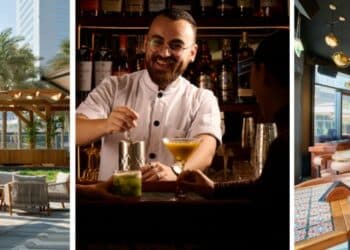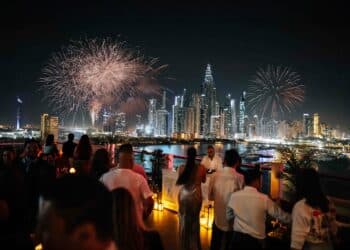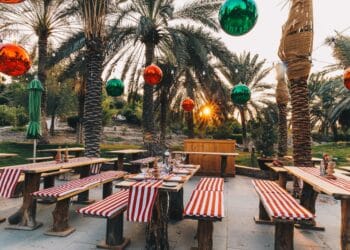Not only have dedicated smokehouses opened, but chefs across the region are putting more smoked items on menus, while experimenting with unusual preparations. Catering News explores the preparations and techniques associated with the trend

Food smoking is big in 2016, with chefs experimenting using everything from fish and beef to vegetables, dairy and even desserts. While Fümé Dubai does a six hour smoked beef chuck rib & slaw, Intersect by Lexus offers smoked celeriac potato soup with chorizo oil, and Nordic concept, Restaurant Frantzén, which was in residence at Enigma in Palazzo Versace Dubai earlier this year, has smoked white moss and smoked vanilla ice cream on its menu.
There is something very comforting about the smell and taste of smoked food, which may explain the mainstream popularity of the preparation. Chef Elizna Botha of 1762 Smoked, a new food smoking concept set within an old-fashioned London bus, says that smoking, “creates a certain type of ambience” and is a very social form of cooking.
Muhamad Abdi, sous chef at Intersect by Lexus explains that the global trend has caught on fast in the Middle East because meat is a central aspect of the regional diet. He comments: “Here in Dubai many people enjoy outdoor cooking and barbeques and when you look at Emirati and Arabic cuisine, meat is typically part of the menu. Smoking is taking barbequing to a new level, increasing the flavours of the food.”
“There are so many types and ways to smoke: smoking cabins, smoke thru water, hot smoke, cold smoke, aromas, powder. There are many things you need to consider as a chef before you choose what type of smoky flavour to use” – Jim Löfdahl, Restaurant Frantzen
Another factor behind the popularity of smoking, according to Abdi, is the ease of preparation. “Smoking food is fun and easy,” he comments. “When we are producing smoked food we just need to focus and do it properly to make sure the food is cured or cooked properly.”
Different smoking techniques are used to create distinct end products, with the two major variations being hot and cold smoking. Botha of 1762 explains: “Hot smoking is what we are concentrating on by smoking our dishes with different types of wood chips. Cold smoking is more about preserving meats and fish, such as cold smoked salmon.”

Smoking techniques also vary from restaurant to restaurant depending on individual chef preferences. Chef Jim Löfdahl of Restaurant Frantzén says: “There are so many types and ways to smoke: smoking cabins, smoke thru water, hot smoke, cold smoke, aromas, powder. There are many things you need to consider as a chef before you choose what type of smoky flavour to use.”
Reif Othman, executive chef at Play Restaurant & Lounge Dubai adds that some chefs use tea leaves or hay grass, while others cure proteins before they smoke them to create a different level of taste. Othman prefers to use a handheld smoking gun and smoked woodchips at Play. To make smoked salmon in riceless uramaki rolls, the raw salmon is placed in a container and covered tightly with aluminium foil, with a small gap left so that the smoking gun’s nozzle can be inserted. The salmon is then smoked for 30 minutes.
At Fümé Dubai, Chef Emiliano Bernasconi marinates and seasons the ingredients then uses apple wood chips and a smoker. Cold smoking is done below 35 degrees, while for hot smoking, the temperature is set above 90 degrees.
Botha of 1762 Smoked says that the team has been practicing their smoking techniques over the past few months and have had plenty of trial and error. She starts by lighting the smoker without chemicals or firelighters, since “everything plays a role in the flavour of the smoke”. In addition to this, she believes the wood chips used are crucial for defining the right flavour.
“We see a growing trend toward smoked dishes, not just in the Middle East but worldwide. This includes anything from fine dining restaurants, to canapés, barbeques and home smoking” – Chef Eliza Botha, 1762 Smoked
“You need to select the type of smoking chips as every wood gives a distinctive flavour. Our favourites are maple, which is mild and sweet; apple wood and cherry are also mild but with fruity notes; and hickory and mesquite give a stronger flavour.” Botha and her team use the Meadowcreek smoker imported from the US, and soak the wood chips in water for at least 24 hours so that they produce a consistent, long-lasting smoke.
“When your fire is burning you need to make sure that you have the correct temperature as every ingredient smokes at different temperatures for a different amount of time. We want smoking to enhance the flavour in our dishes and not to be too overpowering,” she says.
And since smoked items don’t have to directly come into contact with oil, butter, charcoal or heat, smoking can be a healthy method of preparation. Botha comments: “The smoking process is a fat-free form of cooking that requires no additional fats in sauces or preparation.” That said, some warn that smoked food should be consumed in moderation, with Bernasconi of Fümé commenting, “any kind of food should be eaten in moderation and this includes smoked items”.

Smoking also preserves the shelf life of items, which in turn is positive for the environment, according to Löfdahl of Restaurant Frantzen. “Smoked food is good for preserving and for flavour. To preserve food means we have less food wasted around the world,” he comments.
However, Othman of Play warns that smoking can be overdone, meaning that the flavour of the original ingredient is lost. “Some chefs just want the impact of the smoky aroma and aren’t really focusing on the product itself,” he says.
The smoking trend is on the rise in the region with an increase in smoking-specific restaurants such as Perry & Blackwelder’s smokehouse at Madinat Jumeirah, and with chefs across the board putting more smoked items on their menus and experimenting with a wide variety of preparations. Abdi of Intersect comments: “Smoking is becoming more and more popular in the Middle East and you can see new concepts and venues not just having a smokehouse concept, but incorporating more smoked food items into the menu as well as additional twists.”

Botha of 1762 Smoked is also very positive about the future of the trend in the region, commenting: “We see a growing trend toward smoked dishes, not just in the Middle East but worldwide. This includes anything from fine dining restaurants, to canapés, barbeques and home smoking. We’re excited about bringing our smoked menu experience to Dubai with Monty the Bus.”
However, the market requires further education on the possibilities around food smoking for the trend to fully evolve in the Middle East market, according to Play’s Othman. “There’s still a long way to go. We need to educate the clientele here in the Middle East as smoking is very new to some of them and some don’t get it. However, there is definitely potential,” he says.


































































